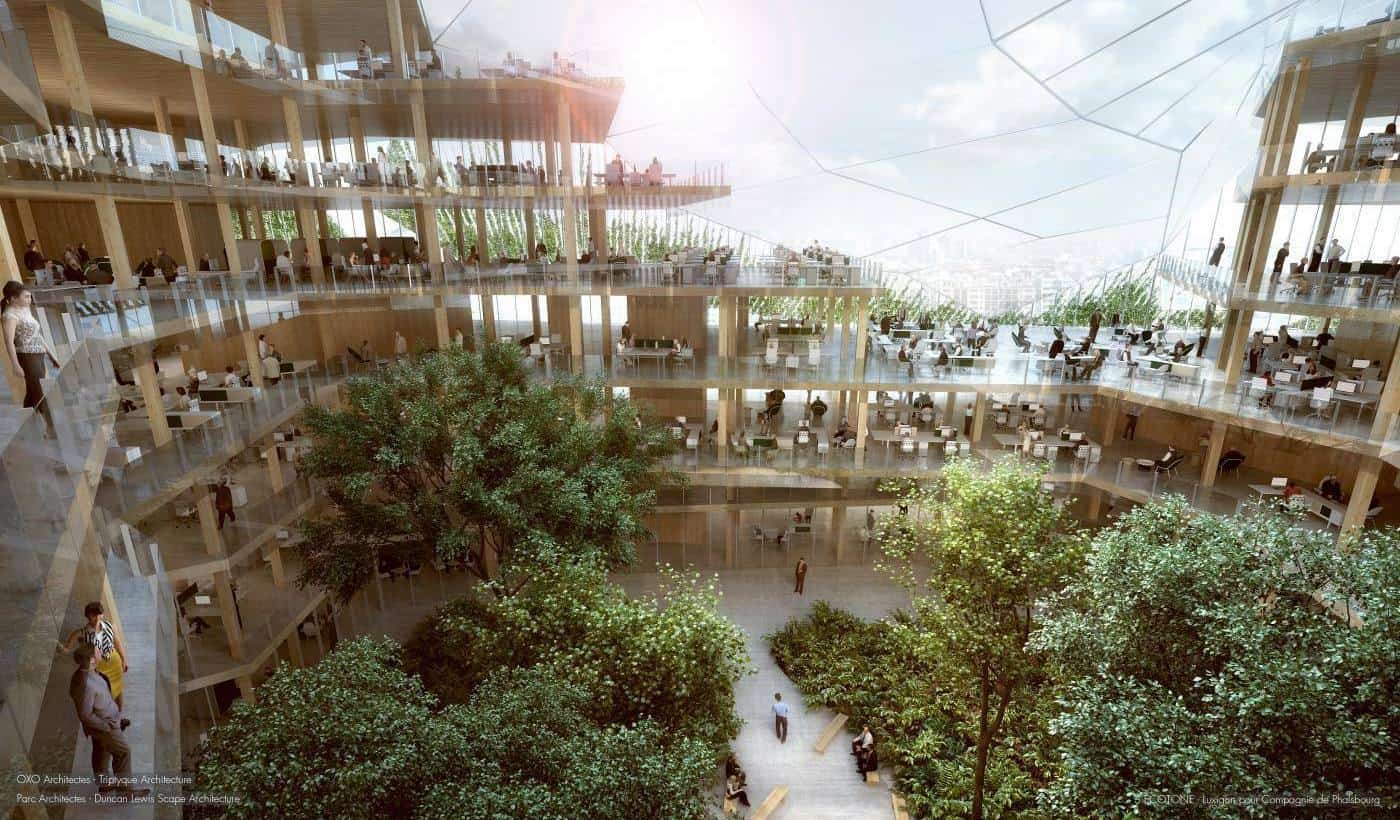
“Observe nature, for it is where your future lies”
4 minutes of reading
Leonardo da Vinci. This quote could be the motto of biomimicry. What does that mean for the real estate sector? Bio-based real estate: reinventing a city by living organisms, for living organisms. Pauline Philippe tell us more.

The Ecotone project in Arcueil (Val-de-Marne), winner of the innovative call for projects entitled “Inventons la Métropole du Grand Paris” (Let’s Invent the Greater Paris Metropolis), is a symbol of the biomimicry approach and one of the first of its kind in the world of real estate. What does it entail, and which main principles drive it?
Pauline Philippe (PP) / This project (led by Compagnie de Phalsbourg) showcases what the implementation of the biomimicry approach in real estate can look like. It explores all available levers—governance, development, layout and architecture—to integrate the principles of biomimicry into a real estate project. The future building, designed as an urban rock of glass and vegetation, will open onto the city and the environment and end the isolation of an area which, today, is divided due to its proximity to two motorways. This multi-storey building with terraces and patios providing homes and workplaces with natural light features 65,000 sq m dedicated to the tertiary sector, a layout designed to promote intergenerational links (residences for young professionals, temporary apartments for researchers, daycare, home care for the elderly, etc.), a health and fitness centre and responsible restaurant services. The multidisciplinary team applied the principles of biomimicry to its way of operating: cooperation and ecosystemic logic, fuelled by mutual interactions. Within this framework, the four project architects worked together using shared specifications. All of this work is supported by a scientific committee on biodiversity and biomimicry comprising the Museum national d’Histoire naturelle, the CEEBIOS (European Excellence Centre for Biomimicry in Senlis), Elan and ENGIE Lab CRIGEN. Other experts may join this committee, such as professor and architect Achim Menges from the University of Stuttgart, who designed the “Hygroskin”. The following concept is part of the architectural experiments to be tested in the project: a wooden envelope, designed based on the behaviour of pine cones, which will open or close based on relative humidity, without any outside intervention or energy.In the years to come, could the biomimicry approach become commonplace in the real estate sector?
PP / This subject is taking on momentum in the real estate sector. We felt a shift happen two years ago during the third edition of Biomim’Expo, the major biomimicry gathering held each year in Paris. Since then, players and stakeholders in the real estate sector have been strongly represented there. More recently, October 2019 marked the launch of Biomim’ City Lab, a working group with the goal to structure the biomimicry approach in the real estate sector to meet the current challenges, namely those linked to global warming. Elan is one of the 9 founding members. Communities are also making the transition. Regions are getting involved in the approach, as evidenced by the example of Nouvelle Aquitaine, where project managers are trained to integrate biomimicry into the specifications. The goal is now to embed this approach into the practices so that it becomes the norm. To do this, Elan, as a property consultant and responsible creator of value, developed a methodology to support sustainable and regenerative real estate project managers.Biomimicry also creates value responsibly! But to what extent?
PP / Several organisms have offered methodologies to evaluate the socio-economic impact of developing biomimicry. In the United States, the Fermanian Business & Economic Institute sought to evaluate the impact of biomimicry on the country’s GDP by 2030. It estimates a generated value of $425 billion, along with the creation of 2 million jobs. In France, the Vertigo Lab consultancy firm evaluated the socio-economic impact of developing the biomimicry approach and estimated a generated value of €2.1 billion and the creation of 36,000 new jobs. These numbers show the economic potential of this approach!More reading
Read also




What lies ahead? 7 megatrends and their influence on construction, real estate and urban development
Article
20 minutes of reading

